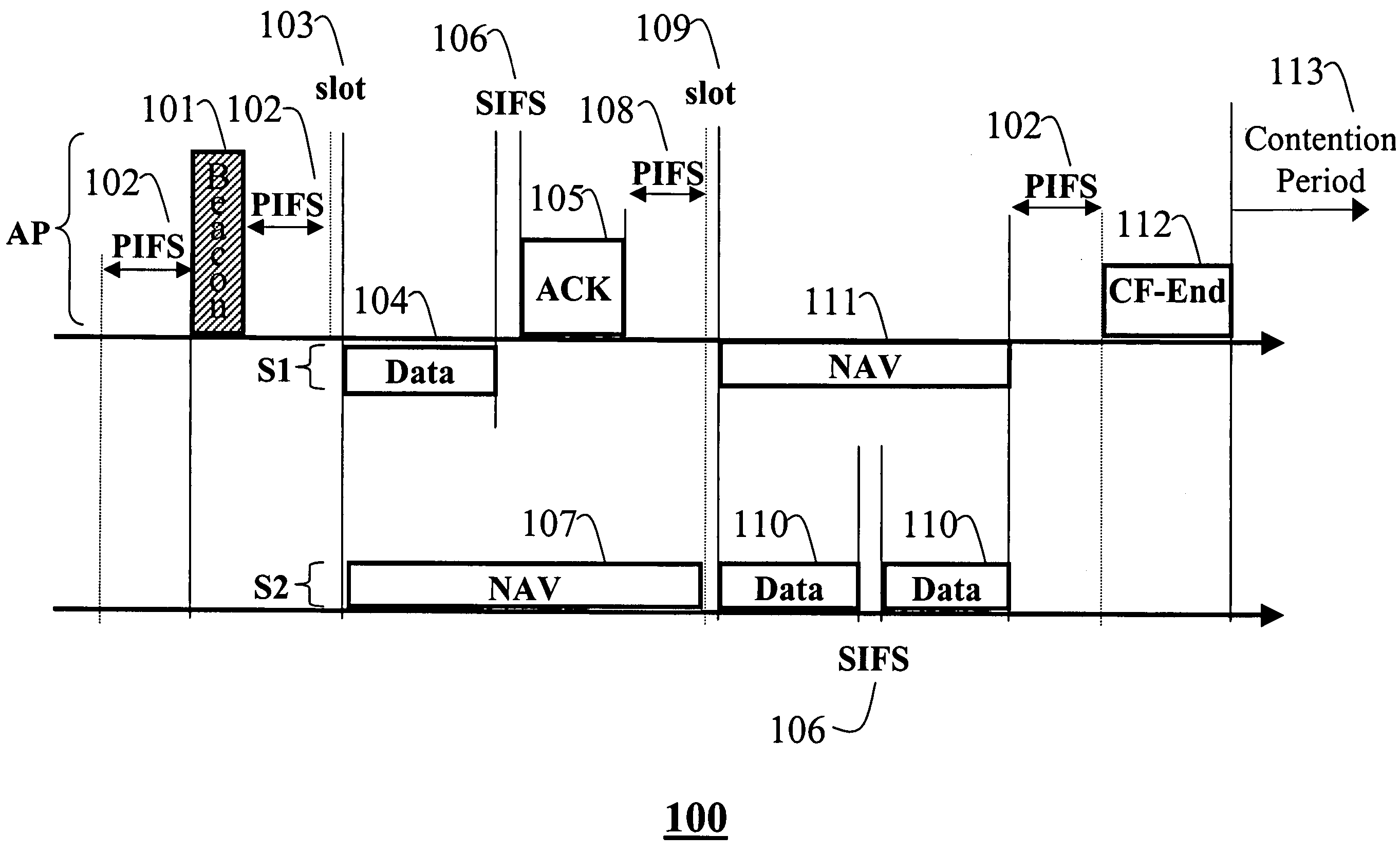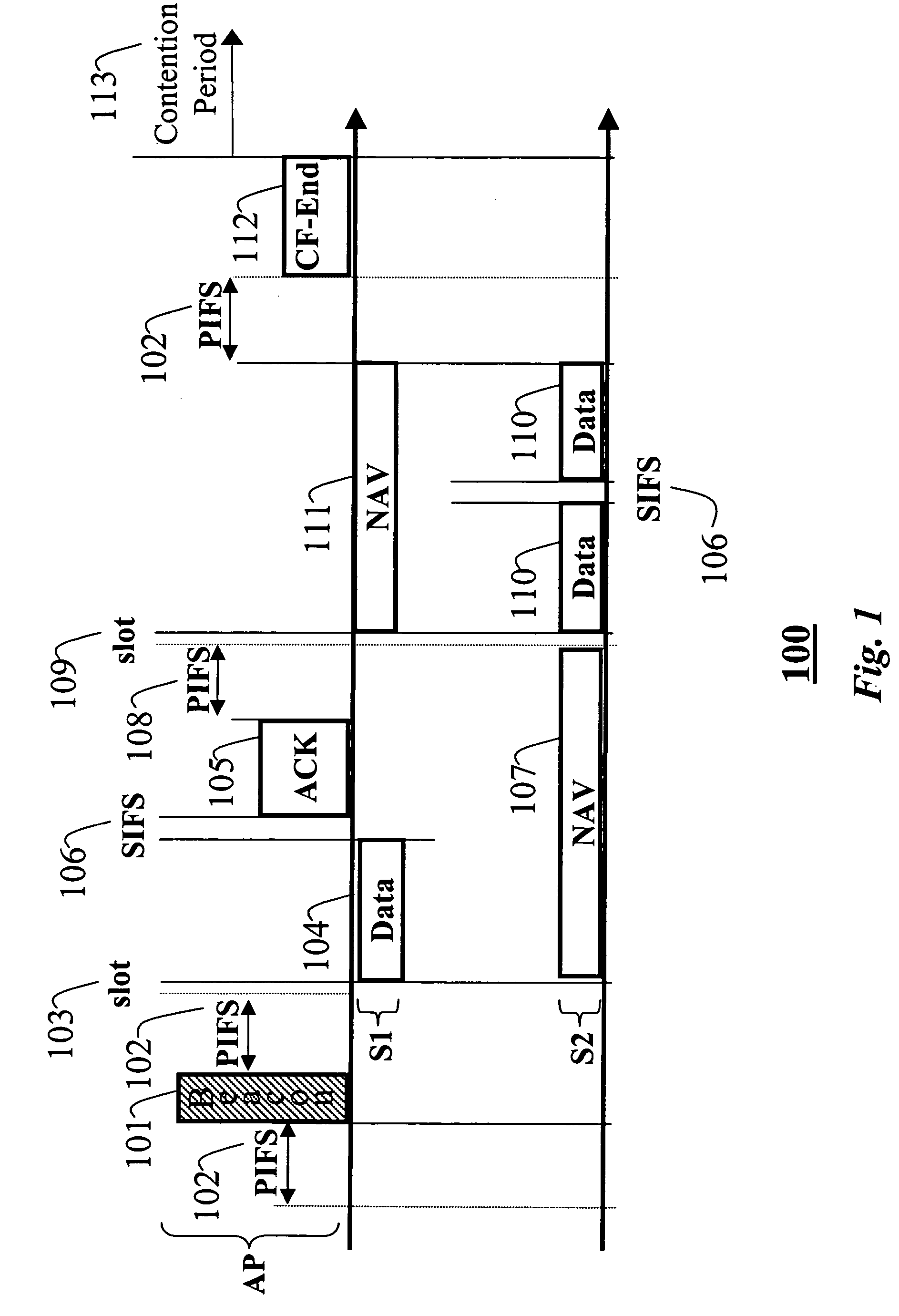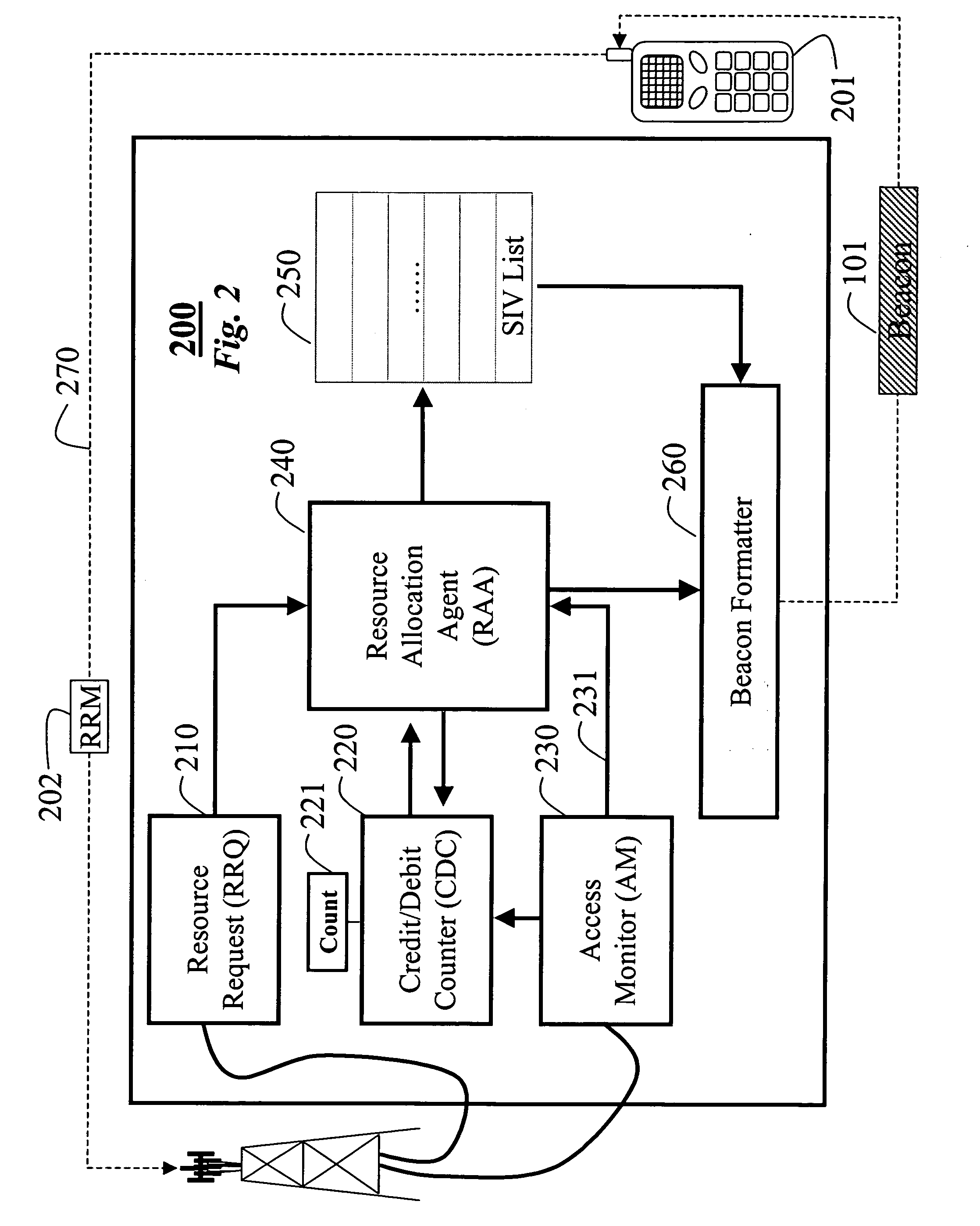Sequential coordinated channel access in wireless networks
a wireless network and channel access technology, applied in the field of wireless networks, can solve the problems of high signaling overhead cost, deterioration of throughput, and strict, fine-grained time synchronization of tdma-based methods, and achieve the effect of improving channel efficiency
- Summary
- Abstract
- Description
- Claims
- Application Information
AI Technical Summary
Benefits of technology
Problems solved by technology
Method used
Image
Examples
Embodiment Construction
[0029] Our invention provides efficient channel access to stations that provide multimedia applications. The invention improves overall channel utilization. The invention can operate during a contention free period (CFP) as defined by the IEEE 802.11 standard. The invention exploits multi-rate physical-layer capability of the IEEE 802.11 standard.
[0030] Three specific goals for our invention are: [0031] (1) Per-data stream-based QoS support—rather than per-class-based differentiated service as in the prior art. That is, each station is provided long-term QoS on a per-data stream basis, while accommodating short-term traffic variations; [0032] (2) Efficient channel utilization via minimized channel wastage in the presence of bursty packet arrivals and reduced signaling overhead incurred by per-packet polling; and [0033] (3) Intelligent policing to monitor and penalize stations that violate a pre-negotiated QoS contract.
[0034] The SCCA method according to our invention operates duri...
PUM
 Login to View More
Login to View More Abstract
Description
Claims
Application Information
 Login to View More
Login to View More - R&D
- Intellectual Property
- Life Sciences
- Materials
- Tech Scout
- Unparalleled Data Quality
- Higher Quality Content
- 60% Fewer Hallucinations
Browse by: Latest US Patents, China's latest patents, Technical Efficacy Thesaurus, Application Domain, Technology Topic, Popular Technical Reports.
© 2025 PatSnap. All rights reserved.Legal|Privacy policy|Modern Slavery Act Transparency Statement|Sitemap|About US| Contact US: help@patsnap.com



